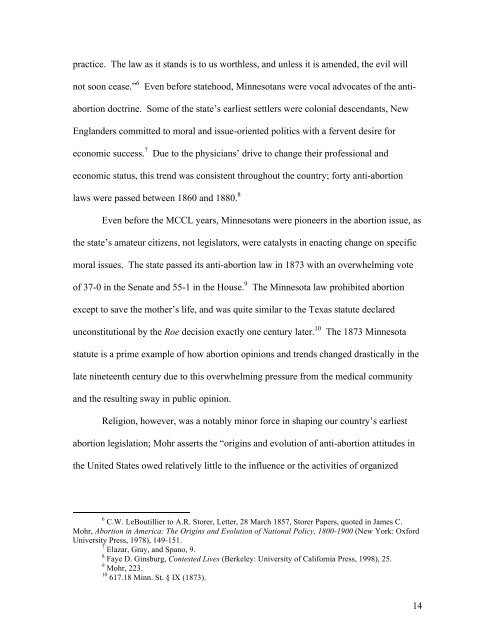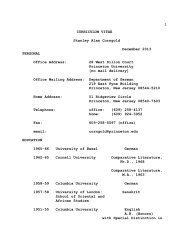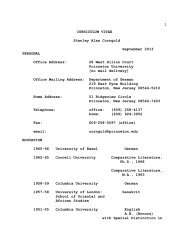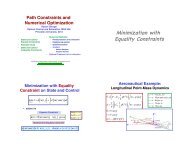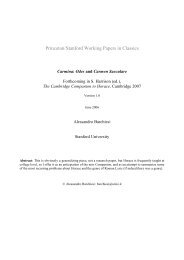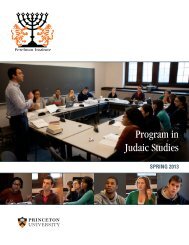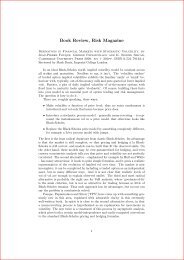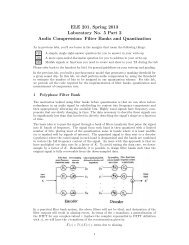The Pre-Roe Pro-Life Movement in Minnesota and New York
The Pre-Roe Pro-Life Movement in Minnesota and New York
The Pre-Roe Pro-Life Movement in Minnesota and New York
You also want an ePaper? Increase the reach of your titles
YUMPU automatically turns print PDFs into web optimized ePapers that Google loves.
practice. <strong>The</strong> law as it st<strong>and</strong>s is to us worthless, <strong>and</strong> unless it is amended, the evil will<br />
not soon cease.” 6<br />
Even before statehood, M<strong>in</strong>nesotans were vocal advocates of the antiabortion<br />
doctr<strong>in</strong>e. Some of the state’s earliest settlers were colonial descendants, <strong>New</strong><br />
Engl<strong>and</strong>ers committed to moral <strong>and</strong> issue-oriented politics with a fervent desire for<br />
economic success. 7<br />
Due to the physicians’ drive to change their professional <strong>and</strong><br />
economic status, this trend was consistent throughout the country; forty anti-abortion<br />
laws were passed between 1860 <strong>and</strong> 1880. 8<br />
Even before the MCCL years, M<strong>in</strong>nesotans were pioneers <strong>in</strong> the abortion issue, as<br />
the state’s amateur citizens, not legislators, were catalysts <strong>in</strong> enact<strong>in</strong>g change on specific<br />
moral issues. <strong>The</strong> state passed its anti-abortion law <strong>in</strong> 1873 with an overwhelm<strong>in</strong>g vote<br />
of 37-0 <strong>in</strong> the Senate <strong>and</strong> 55-1 <strong>in</strong> the House. 9<br />
<strong>The</strong> M<strong>in</strong>nesota law prohibited abortion<br />
except to save the mother’s life, <strong>and</strong> was quite similar to the Texas statute declared<br />
unconstitutional by the <strong>Roe</strong> decision exactly one century later. 10<br />
<strong>The</strong> 1873 M<strong>in</strong>nesota<br />
statute is a prime example of how abortion op<strong>in</strong>ions <strong>and</strong> trends changed drastically <strong>in</strong> the<br />
late n<strong>in</strong>eteenth century due to this overwhelm<strong>in</strong>g pressure from the medical community<br />
<strong>and</strong> the result<strong>in</strong>g sway <strong>in</strong> public op<strong>in</strong>ion.<br />
Religion, however, was a notably m<strong>in</strong>or force <strong>in</strong> shap<strong>in</strong>g our country’s earliest<br />
abortion legislation; Mohr asserts the “orig<strong>in</strong>s <strong>and</strong> evolution of anti-abortion attitudes <strong>in</strong><br />
the United States owed relatively little to the <strong>in</strong>fluence or the activities of organized<br />
6 C.W. LeBoutillier to A.R. Storer, Letter, 28 March 1857, Storer Papers, quoted <strong>in</strong> James C.<br />
Mohr, Abortion <strong>in</strong> America: <strong>The</strong> Orig<strong>in</strong>s <strong>and</strong> Evolution of National Policy, 1800-1900 (<strong>New</strong> <strong>York</strong>: Oxford<br />
University <strong>Pre</strong>ss, 1978), 149-151.<br />
7 Elazar, Gray, <strong>and</strong> Spano, 9.<br />
8 Faye D. G<strong>in</strong>sburg, Contested Lives (Berkeley: University of California <strong>Pre</strong>ss, 1998), 25.<br />
9 Mohr, 223.<br />
10 617.18 M<strong>in</strong>n. St. § IX (1873).<br />
14


